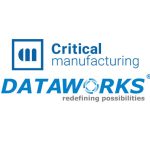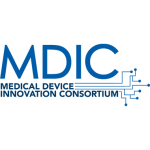Excess humidity can affect a pharmaceutical’s structure, chemical stability, dissolving rate and more. This unwanted moisture can come in contact with product at multiple points throughout production and shipping. However, modern technologies are making it easier for companies to control humidity levels. Following are seven innovative solutions to help companies detect and prevent excess moisture from coming in contact with their pharmaceuticals during production, shipping, storage and after they arrive at the end user’s location.
IoT Humidity Sensors
The Internet of Things (IoT) has revolutionized companies’ ability to monitor a host of concerns, including temperature, equipment function and humidity levels. IoT humidity sensors can track moisture levels in real-time and adjust dehumidifier solutions accordingly to prevent them from reaching unacceptable levels. They can also alert stakeholders if moisture control systems malfunction, allowing them to take action before product is damaged.
Versatility is another key advantage of the IoT. Manufacturers can apply these wireless sensors at any point in the supply chain where real-time monitoring is needed. This includes gauging humidity levels in production, ensuring ideal levels in shipping, and tracking maintenance concerns in moisture control systems.
Infrared Radiation
Thermogravimetric analysis is one of the most popular solutions for moisture control in pharmaceutical manufacturing, particularly in product testing. Systems that utilize infrared radiation are among the most effective offerings.
Infrared thermogravimetric solutions can analyze humidity levels in dry samples to detect undesired moisture. In addition, the infrared wavelengths generate enough heat to dry pharmaceuticals without the risk of excessive heating seen with microwaves and other lower-wavelength spectrums. This more even heating translates into more reliable loss measurements to determine sample moisture levels.
Older infrared analysis tools had long analysis times and only measured the sample cavity, not the entire sample. Newer iterations resolve these issues by using a lattice of parallel infrared beams to irradiate more evenly as well as innovative cooldown mechanisms to speed processing times.
Flexible Containment Systems
In addition to testing, pharma manufacturers also need to keep moisture out during production. Flexible film isolators have recently emerged as an ideal alternative to the older, industry-standard rigid containment systems.
Flexible containment systems use a plastic film to create a contained, moisture-controlled environment instead of steel or acrylic glass. They also use disposable peripherals such as single-use glove bags. Vacuum-sealing technology enables them to keep out as much humidity as a rigid system with the added benefits of cost-effectiveness and production efficiency.
Taking down and setting up film barriers—or exchanging single-use peripherals—is more efficient than cleaning a rigid system between product changeovers. As a result, flexible containment reduces production downtime and lowers costs, all while minimizing cross-contamination and humidity risks.
Cold Chain Dehumidifiers
Large-scale dehumidifiers help keep containment systems moisture-free, but supply chain processes require specialized options. Pharma companies must prevent humidity in transit and storage, which can be challenging due to many pharmaceuticals’ unique supply chain needs. Modern cold-chain dehumidifiers address these concerns.
The cold chain many pharmaceuticals rely on requires storage temperatures between 38 and 40 degrees Fahrenheit. Conventional dehumidifiers often struggle to maintain efficiency in these conditions, and older models can produce excess heat, jeopardizing sensitive pharmaceuticals. That’s why newer alternatives use desiccants in addition to coil-based dehumidifying technology.
Industrial-scale desiccant solutions mitigate peaks in moisture that may arise when mechanical dehumidifier elements fail. That failsafe lets cold chain partners ensure the safety and quality of their products throughout storage and shipping, even during unforeseen disruptions.
AI Packaging Technologies
Many solutions for moisture control in pharmaceutical manufacturing focus on production and facility-wide systems, but packaging considerations deserve attention, too. Insufficient packaging or errors in package manufacturing can create leaks for moisture to seep in. Artificial intelligence (AI) holds a solution.
The pharmaceutical industry already uses AI to develop new drugs, and similar models can help design ideal packaging solutions. AI-guided product design can highlight where existing packages may fail and suggest changes to keep more humidity out of the package. Similarly, AI can analyze digital twins of production lines to pinpoint where errors may arise that would jeopardize packaging integrity.
During manufacturing, machine vision systems can analyze packages for defects faster and more accurately than humans. Over time, data about the flaws they notice can be used to inform changes to production.
Activated Carbon Fiber
After designing moisture-resistant packaging, pharma companies must implement in-package humidity control systems. Silica gel desiccant packets are the most common solution, but recent advances in activated carbon fiber (ACF) make it a more appealing alternative.
Activated carbon’s high surface area and hygroscopic properties make it an ideal option for absorbing excess moisture from the air. High-temperature activation can take these benefits further. A 2023 study revealed that activating carbon at 1,050 degrees Celsius for two hours makes ACF 112% more water-adsorbent than conventional ACF.
In addition to preventing moisture buildup, high-temperature ACF removes both organic and inorganic impurities. Consequently, pharma companies can address multiple quality assurance needs with a single in-package solution.
Hybrid Drop-in Desiccant Capsules
Hybrid options are another promising method for in-package moisture control. Many pharmaceutical packages use built-in desiccant chambers in the cap or bottom of the bottle, but this is costly. Drop-in alternatives are more cost-effective, and hybrid ones combine the benefits of different desiccants.
Silica gel is popular for its cost-effectiveness, but ACF and molecular sieves are often more effective. Hybrid desiccant capsules let pharma manufacturers implement both, using ACF or sieves to boost the efficacy of more affordable silica gel. Cylindrical capsules’ form factor extends these benefits. Conventional desiccant packets can only absorb moisture from one or two sides, but new capsule designs enable 360-degree absorption. Even if a package’s contents shift in transit, the desiccant remains effective.
It’s difficult to overstate the importance of moisture control in pharmaceutical manufacturing. Thankfully, as technology evolves, it’s becoming easier to address these concerns across the entire pharmaceutical supply chain.
These seven technologies represent some of the most promising innovations today, and new alternatives will emerge with ongoing research. Staying informed about these developments will help pharmaceutical manufacturers balance product quality, safety and production costs.







